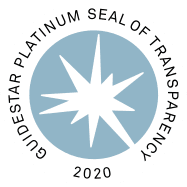Although it does not receive much attention in the US, millions of people in East Africa are at risk of facing hunger, acute malnutrition, and perhaps even famine. The situation is especially dire in eastern Ethiopia and Somalia, home to many of the region’s pastoralist communities.
Pastoralists rely on livestock to survive, often moving from one location to another to feed and water their stock. But a combination of drought, political instability and poor policies is wreaking havoc. Fortunately, for some herders, insurance products are helping to make a desperate situation a little bit better.
Droughts lead to crises for East Africa’s pastoralists
Over the past number of years, rains in Somalia and Ethiopia have been slow to come and often significantly below normal levels. Particularly in parts of eastern Ethiopia, decreasing annual rainfall has become a long-term trend.
For pastoralists, this means that pastures are growing less grass and are therefore often overgrazed. Water sources, whether in wells, springs or rivers, are depleted or dry. The cattle, camel, sheep, and goats that communities rely on for food and income lose weight, grow sick, and often die.
To “cash in” before the worst happens, families often sell their animals. But in a drought, everyone faces the same problem, so the market is flooded. As the supply of livestock rises, prices drop. Families are left with fewer or no animals and little income. At the same time, costs of food increase because harvests have failed, and what little water is available is often dirty.
The results are devastating: a report from Médicins sans Frontières (Doctors without Borders) says that rates of malnutrition in Ethiopia are at “alarming levels.” Over the course of just one month in 2017, no less than 67 children died as a result of severe malnourishment.
Government policies can worsen conditions for the average person
These weather-related problems are compounded by government policies that take lands out of the traditional governance and production systems that pastoralist communities have developed over centuries.
The government repurposes the land for large-scale commercial agriculture, conservation areas, or expanding cities. Pastoralists lose their customary rights to land and water, their freedom of movement is limited, and their ability to trade with others is constrained.
Conflict also plays an important role in the problems faced by pastoralists. In Somalia, long-standing fighting between insurgent groups such as Al-Shabab and government forces make it difficult to create economic growth, invest in increased agricultural productivity, or even provide basic services. In 2011, Al-Shabab reportedly stopped food aid deliveries during a famine, contributing to a huge loss of life.
When droughts last for several years, people struggle to survive. According to some reports, due to drought, more than 500,000 Somalis left their homes in search of relief.
Fighting in northern Kenya between insurgents and government forces and among pastoralist groups has been ongoing for decades, creating instability and making it similarly difficult to create sustained economic and social improvements.
And in Ethiopia, the government has often been at odds with pastoralist groups from the eastern region, a persistently underdeveloped area. Drought coupled with long-standing conflict and policies that dispossess pastoralists make for a deadly combination.
When prosperity and stability is threatened, people die
Out of desperation, many people move into informal camps near cities or to humanitarian camps seeking food and medical care. Once there, they can face other serious problems, including cholera and measles.
The Washington Post reported that, during the 2017 Somali drought, nearly 160,000 people moved to camps in Baidoa in central Somalia. As a result, cholera, a swift and deadly disease if left untreated, struck tens of thousands of these displaced people.
In the face of these enormous challenges, is there anything that can be done to help break, or at least mitigate, this cycle of despair?
Market-based insurance solutions can help address complex problems for pastoralists
What if pastoralists could look to the market to help manage some of their risks? What if they could insure against animal loss? For a long time, this was not possible, but in 2010, index-based livestock insurance, a kind of “micro-insurance,” became available to pastoralists in Kenya, expanding to Ethiopia in 2012.
Index-based livestock insurance uses remote sensing technologies to identify how much vegetation — some of it fodder — exists in a location. This data is combined with information from a public index of vegetation coverage to identify the level of risk of harm to animals in the future. This risk assessment, in turn, can be used to create a policy premium rate.
Agents do not need to find or visit the mobile pastoralists — they use satellite imagery to identify areas where losses are likely to be taking place and they pay for average losses, not for specific losses.
Pastoralists collect payouts (via tablets and using biometrics) when the amount of grass or other vegetation falls below a threshold. With their payouts, policyholders can buy fodder, pay for vet care, or purchase new animals. Research shows that these payouts reduced “distress” sales and dependence on food aid.
Aid agencies have played a role in supporting the development of this product, but the hope is that it is now on its way to becoming an important part of the commercial insurance market.
Entrepreneurs are already solving critical problems
Kenya-based insurance company Takaful Insurance of Africa (TIA), which won the African 2017 Insurance Innovation Award, along with partner organization the International Livestock Research Institute (ILRI), introduced their index-based livestock policies, which are Islamic-law compliant, in 2013.
In 2014, they made their first payout to pastoralists in the northeastern part of Kenya. The product became available in six Kenyan counties and paid benefits to nearly 2,000 families out of a pool of over 12,000 policyholders as of 2017. TIA has since expanded to Somalia.
If government regulations allow it, this model of index-based insurance could spread across the Sahel in Africa and beyond, helping thousands of at-risk communities manage an uncertain future.
Insurance obviously cannot solve all of the complex problems of hunger, malnutrition, and famine in drought-stricken East Africa, but this market-based innovation is a welcome strategy to help protect families that have lost so much.
To read more about new technology be sure to check out our cluster page by clicking on the button below.
Updated by Joseph Simnett
This piece solely expresses the opinion of the author and not necessarily the organization as a whole. Students For Liberty is committed to facilitating a broad dialogue for liberty, representing a variety of opinions. If you’re a student interested in presenting your perspective on this blog, send your piece to [email protected], and mention SFL Blog in the email subject line for your chance to be published and be seen!

















